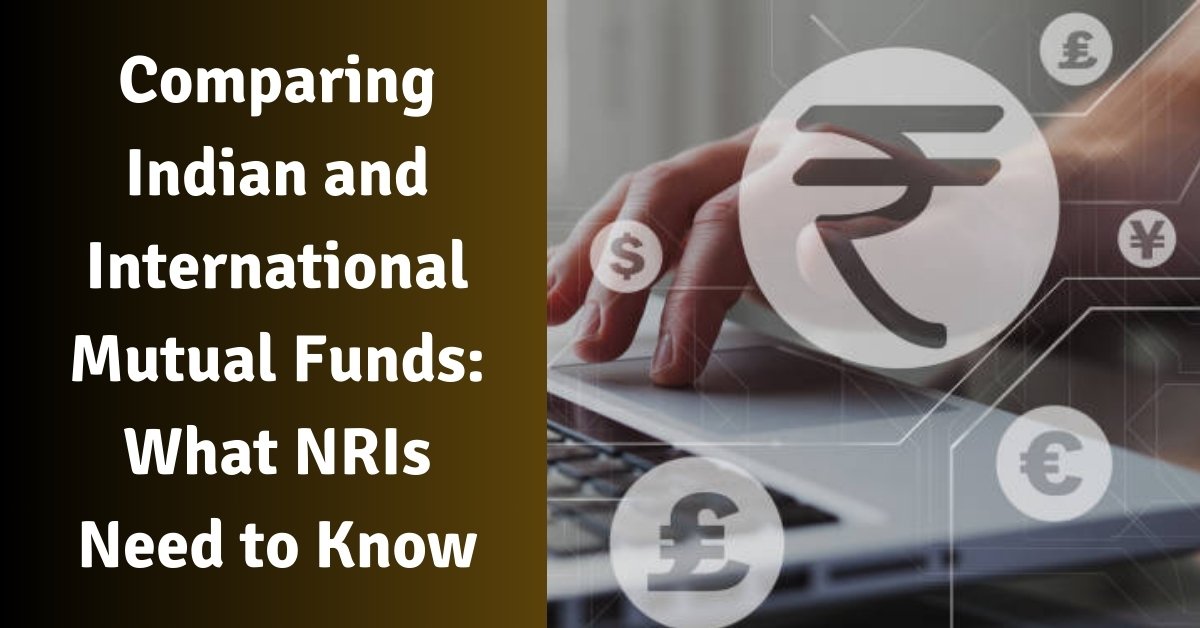As a Non-Resident Indian (NRI), you have the opportunity to invest in both Indian and international mutual funds. While both types of funds offer the potential for wealth creation and diversification, there are significant differences between them that you should be aware of. In this blog post, we will compare Indian and international mutual funds, highlighting the key factors that NRIs need to consider when making investment decisions.
Market Exposure
One of the primary differences between Indian and international mutual funds is the market exposure they provide. Indian mutual funds invest primarily in securities listed on Indian stock exchanges, such as the Bombay Stock Exchange (BSE) and the National Stock Exchange (NSE). These funds offer exposure to the Indian economy and its growth potential.
On the other hand, international mutual funds invest in securities listed on foreign stock exchanges, providing exposure to global markets. This allows NRIs to diversify their portfolio across different countries, currencies, and sectors, reducing the risk associated with investing in a single market.
Currency Risk
When investing in international mutual funds, NRIs are exposed to currency risk. Fluctuations in exchange rates between the Indian rupee and foreign currencies can impact the returns of international funds. If the Indian rupee appreciates against the foreign currency, the returns from international funds may be lower when converted back to rupees.
In contrast, Indian mutual funds do not carry currency risk, as they are invested in securities denominated in Indian rupees. This makes Indian mutual funds a more stable option for NRIs who prefer to avoid currency fluctuations.
Regulatory Framework
Indian mutual funds are regulated by the Securities and Exchange Board of India (SEBI), which sets guidelines and standards for the operation of mutual funds in India. SEBI ensures that mutual fund companies adhere to strict disclosure norms, investor protection measures, and risk management practices.
International mutual funds, on the other hand, are subject to the regulations of the countries where they are domiciled. The regulatory framework and investor protection measures may vary from country to country, making it essential for NRIs to research and understand the regulations applicable to the specific international funds they are considering.
Taxation
The taxation of Indian and international mutual funds differs for NRIs. Gains from Indian mutual funds are subject to Short-Term Capital Gains Tax (STCG) and Long-Term Capital Gains Tax (LTCG), depending on the holding period. STCG is applicable if the units are redeemed within 12 months for equity funds and within 36 months for debt funds. LTCG is applicable if the units are held for a longer period.
For international mutual funds, the taxation depends on the Double Taxation Avoidance Agreement (DTAA) between India and the country where the fund is domiciled. NRIs may be liable to pay taxes in both countries, and it’s crucial to understand the tax implications and claim the appropriate tax credits to avoid double taxation.
Costs and Expenses
Investing in international mutual funds may involve higher costs compared to Indian mutual funds. International funds may have higher expense ratios due to factors such as currency hedging, global research, and fund management fees. Additionally, NRIs may incur charges related to currency conversion and fund transfers when investing in international funds.
Indian mutual funds, being local investments, generally have lower expense ratios and transaction costs. However, it’s essential to compare the costs and expenses of different funds within each category to make an informed decision.
Risk and Return Potential
International mutual funds offer the potential for higher returns due to access to a wider range of investment opportunities and the ability to capitalize on global market trends. However, they also carry higher risks, such as currency fluctuations, geopolitical events, and differences in accounting and reporting standards.
Indian mutual funds, while exposed to domestic market risks, offer the potential for steady returns backed by the growth of the Indian economy. The Indian market has shown resilience and growth potential over the years, making Indian mutual funds an attractive option for NRIs looking to participate in the country’s economic growth story.
Fund Selection and Monitoring
When investing in international mutual funds, NRIs may face challenges in terms of fund selection and monitoring. Evaluating international funds requires an understanding of global markets, foreign economies, and the specific sectors or themes the funds invest in. It may be more difficult to access information and track the performance of international funds compared to Indian funds.
Indian mutual funds, being local investments, offer greater familiarity and ease of monitoring for NRIs. Information about Indian funds is readily available, and NRIs can easily track their performance through local financial portals and mutual fund websites.
Conclusion –
Both Indian and international mutual funds offer unique opportunities for NRIs to grow their wealth and diversify their investment portfolio. When deciding between the two, NRIs should consider factors such as market exposure, currency risk, regulatory framework, taxation, costs, risk-return potential, and ease of fund selection and monitoring.
It’s essential to align your mutual fund investments with your financial goals, risk tolerance, and investment horizon. Consulting with a financial advisor experienced in serving NRIs can help you make informed decisions and create a diversified investment strategy that includes both Indian and international mutual funds.
Remember, while international mutual funds offer the potential for higher returns and global diversification, they also carry additional risks and complexities. NRIs should thoroughly research and understand the specific funds they are considering, and stay informed about the global market developments that may impact their investments.
Ultimately, the decision to invest in Indian or international mutual funds, or a combination of both, depends on your individual financial circumstances, goals, and risk appetite. By carefully evaluating the factors discussed in this blog post and seeking professional guidance, NRIs can make informed investment choices and work towards achieving their long-term financial objectives.
Disclaimer: The information provided here is for educational and informational purposes only and should not be construed as financial, legal, or tax advice. Consult with a qualified professional before making any investment decisions. We do not accept any liability for errors or omissions in this information nor any direct, indirect, or consequential losses arising from its use.





